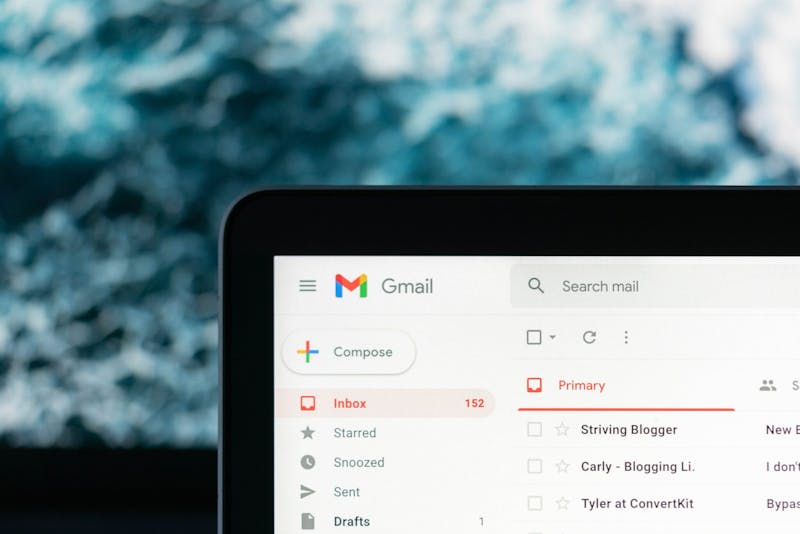It’ll probably come as no surprise that there’s no single “type” of copywriting. There are, rather, many different types of copywriting. And they’re all used in unique ways. But why should you be paying attention to the differences?
It’s simple. Knowing how to identify and correctly use different copywriting styles is essential to getting the best results out of your content marketing strategy. Why? It helps you ensure you’re always electing the most effective copywriting approach to achieve your business’ content goals and reach your target audience.
As you develop a stronger understanding of what kind of content you are creating, you can begin to produce the right type of copy that is designed to respond to the specific needs of your audience at whatever stage they’re at. This can support current marketing efforts and help drive more effective advertising campaigns.
Want to learn how to spot the different types of copywriting in action? Here’s your guide to the most common copywriting approaches, plus the details you need to know to execute them well for yourself.
What is copywriting?
Copywriting is an essential skill when it comes to marketing your business and communicating directly with your audience. From informative to sales-driven, copywriting is designed to help you speak with your consumers in clear, purposeful, and strategic ways every time you share new content.
Unlike content writing, which focuses on brand identity and awareness, copywriting usually includes a sales writing focus at its core, even if other messages are being communicated as well. A creative copywriter uses their skills to advertise business products, services, or other details in ways that prompt interest and engagement among your audience.
These advertorial elements make copywriting a key component of digital ads, website pages, social media posts, and other marketing-adjacent activities. Whether you’re communicating online or via a print medium, copywriting inspires action, making you more likely to secure your next sale.
Understanding: copywriting terminology
Before we move into the various types of copywriting, it’s key that we lay down the groundwork with common industry terms and abbreviations. While you don’t have to understand everything, having a strong knowledge base can go a long way towards helping you improve your overall copywriting ability.
When you first start learning about digital copywriting, you may hear people talking about B2B or B2C copy. These abbreviations stand for “business to business” and “business to consumer.” They relate to audience targeting, defining whether you are writing for other brands or potential buyers.
Another common copywriting term is “call to action,” sometimes called a CTA. This relates to a line of copy, often at the end of a copywriting piece, that invites readers to take action in some way. In digital environments, this action might be to click a link, leave a comment, or even make a purchase.
You may also hear link-related copywriting terms. A backlink is a link on a webpage that directs users to your webpage, while a hyperlink is any link connected to a piece of text. An inbound link is a link of your site that directs users to somewhere else on your site, while an outbound link directs users to another site altogether. The term “slug” refers to the words that follow the domain in a web address, where your copy may be published.
When learning about copywriting, it’s important to learn about keyword-specific terminology. A keyword is any common search term or phase that someone might Google to find products or services like yours. Using these keywords strategically to influence search engine results and boost website traffic is called search engine optimisation, or SEO. A strong SEO strategy is the key to great copywriting and effective digital marketing!
Understanding: the different types of copywriting
Now that we’ve covered what copywriting is, and the key terminology you should know – it’s time to dive into the different types of copywriting out there.
Copywriting can vary all the way from social media copywriting which might involve a 60 word post on Facebook to eBook writing which could entail a heavily researched 3000 words, with footnotes. And this is just the tip of the iceberg. There are so many different types, and they all require different skill sets, techniques and tools.
Let’s help you navigate this terrain by running through the main types of copywriting, what they are, why they’re important and how you should use them.
1. Social media copywriting

What is it?
Social media copywriting is one of the most important and widely performed types of copywriting. This format is designed to fulfill business needs in the social media environment, across all platforms and devices. The most common channels social media copywriters cater to include LinkedIn, Facebook, Instagram, Twitter and Tik Tok. Social media copywriting can encompass both organic and paid activity.
Why is it important?
In the modern world where online advertising is key to business success, writing great copy for social media is essential. If done well it truly has the power to help you grow your business and your online reach, build your audience and brand power.
How to master it
Social media copywriting needs to be short and sharp. You need to be able to communicate information in clear and creative ways in order to maintain audience attention. In line with this objective, opting for a simple vocabulary, an informal tone, and a range of emojis to brighten up your content is a good idea.
Most importantly you need to be able to adapt your copy to suit the needs of your target audience. In a way that they are likely to understand and resonate with. There’s no point writing a beautifully crafted ad if it won’t land with your intended audience. Equally, don’t forget to pair your copy with creative and attention-grabbing visual assets! Symbiosis between copy and design goes a long way in the social media game.
Standout elements
The standout elements of social media copywriting include:
- concise communication
- creative copywriting styles
- emojis
- clear calls to action
Example
Want an example of great social media copywriting? Check out the social media accounts for Nike! This global brand uses clear, effective copywriting skills to its advantage to engage users and encourage further action.
2. Email copywriting

What is it?
Email copywriting refers to all the copy that goes into a business’ email communications. Whether it be for newsletters, email nurtures or EDMs. The copy itself includes everything from the body text to subject lines, preview text, banner text, signatures etc. Like social media copywriting, email copywriting is a great vehicle for allowing brands to communicate meaningfully and purposefully with their audience in a digital environment.
Why is it important?
Good email copywriting can play a key role in supporting brand awareness, driving leads and generating sales to help businesses achieve their development goals. Using email marketing skills, you can get your desired message to customers directly and in a personal way. It is the intimacy of this form of marketing that can be very powerful in an advertorial context.
How do you master it?
When communicating via email, it’s important to ensure that your copywriting is clear, persuasive, and engaging. Your copy needs to make users care about your brand and its message, without being pushy and nudging recipients to take an action, whether it be to visit your website or make a purchase.
Generally, email copy is longer than a social media post but shorter than a website blog. Your emails should get straight to the point and should always include an effective call to action. Depending on your audience, you might decide to add in digital features and visual media to boost engagement rates.
As email copywriting is often one component of a content marketing strategy, you need to ensure your email content aligns with other campaign and brand content marketing goals.
Ultimately, to truly master email copywriting, you’ll need to know your audience back to front and how to engage with them to see results. Find out what matters most to your customers, and ensure that your emails respond to these interests and needs.
Standout elements
The standout elements of email copywriting include:
- straight to the point communication
- use of visual media and digital tools
- effective calls to action
Example
Want an example of effective email copywriting? Subscribe for email updates from Plann or Harvey Norman! These companies use the key attributes of effective email copy to drive engagement with new offers and campaigns.
3. SEO copywriting
What is it?
SEO copywriting, is the process of crafting SEO-optimised copy designed to meet the needs of search engines and an identified target audience. In the modern world, SEO is the key to copywriting success, whether you’re working on brand copywriting, website copywriting, social media copywriting.
Why is it important?
By incorporating SEO elements into your copy, you can ensure your business appears whenever a prospect is searching for something relevant to your area of expertise. Writing for SEO allows your business to be visible, findable and accessible online, in the right places. Which ultimately allows you maximise your reach, establish credibility with your audience and boost your chances of converting or selling your product / service.
How do you master it?
Effective SEO copy should always involve the prioritisation of meaning. While including relevant keywords in your copy is important for improving reach and driving web traffic, this should never compromise the clarity and purposefulness of your copy. And any keyword insertion should feel authentic, rather than forced.
Good SEO copywriting combines the interests of human readers with the needs of common search engines and their algorithms. Keywords intelligently integrated can help new customers find your business online!
You can use SEO copywriting across a variety of channels. As you build your content marketing strategy, SEO can be applied to social media platforms as well as websites, blog articles, and other online publications.
Standout elements
The standout elements of SEO copywriting include:
- purposeful communication
- integration of keywords
- sales-driven writing
Example
Want an example of strong SEO copywriting? Check out Prozely‘s website and blog content! We combine effective copywriting skills with advanced SEO knowledge to reach audiences online.
4. Technical copywriting
What is it?
Technical copywriting is a highly specialised copywriting skill. This type of copywriting is typically written to help readers learn and understand advanced technological systems, products, and updates. Technical writers often have a career background in their area of expertise – allowing them to explain highly complex issues in simple, easy to understand ways.
Why is it important?
Effective technical copywriting is particularly important in industries where there’s a lot of jargon and complex concepts involved. Having technical copywriting skills enables the communication of these ideas to a less technical audience in clear and succinct ways, making them easy to understand and engage with and improving brand awareness and engagement.
How do you master it?
Technical copy should be clear and comprehensive, providing plenty of information to break down complex concepts.
Often, technical copywriting is used in conjunction with sales copy, email copywriting, and other content marketing avenues. If used in this context, your copy should give consumers a clear reason to choose your company and the products it offers.
To master technical copywriting, you’ll need to be an effective communicator, knowing how to share information in simple, comprehensible ways. A good technical writer can make even the most complicated concepts easy to understand.
Standout elements
The standout elements of technical copywriting include:
- clear communication
- comprehensive explanations
- reasons to buy or engage
Example
Want an example of good technical copywriting? Check out the blogs published by Tawk.to or Outranking! These brands provide clear explanations of complex systems and ideas.
5. Direct Response copywriting
What is it?
Direct response copywriting is a purpose-driven copywriting style. The primary goal is to encourage readers and consumers to take specific actions on a web page and the ultimate objective is to maximise traffic and sales conversions.
Why is it important?
The answer to this is short and sweet. Direct response copywriting is an important marketing skill. Using effective direct response copywriting skills to target prospects at each stage of the buyer’s cycle, you can make a measurable impact on sales figures. Meaning good direct response copy = more conversions!
How do you master it?
Direct response copywriting should always be short, sharp, and purposeful. You should try to be as brief and clear as possible, and tell readers exactly what steps they should take next to engage with your brand. Making their journey to sale as seamless and frictionless as possible is key.
Standout elements
The standout elements of direct response copywriting include:
- short, sharp copy
- clear directions for readers
- response to a trigger
- a strong, compelling CTA
How to master it
To master direct response copywriting, you’ll need to know your consumers back to front plus how and when to target them. Set up trigger events on your site when direct response copy can appear and create an impact.
Example
Want an example of great direct response copywriting? Check out PayPal and Amazon, who use direct response pop-ups and emails to respond to actions users take on their websites.
6. Website copywriting
What is it?
Website copywriting refers to all the copy that goes onto a business’ website. Usually this encompasses a range of different pages from service to blog and contact us and beyond – all with different purposes, styles and techniques.
Often, website copywriting is used collaboratively with other copywriting styles, including creative copywriting, brand copywriting, and SEO copywriting. A comprehensive website copy approach can help to optimise your business for success.
Why is it important?
Needless to say: website copywriting is central to any copywriting or content marketing strategy. Particularly as many people see websites as the primary vessel for communicating brand voice and value to audiences online.
Website copywriting also provides an excellent avenue for you to clearly communicate your business story and the product or services you offer. It is essentially your platform to tell users why your company matters.
How do you master it?
To master website copywriting, you’ll need to know your business well and understand the navigating needs of your audience. This way, you can provide an optimised user experience for website visitors.
Standout elements
The standout elements of website copywriting include:
- clear communication
- keyword integration
- comprehensive information
Example
Want an example of good website copywriting? Check out the Prozely website! Prozely uses keyword-dense copywriting and a variety of different page types to engage users and improve search engine ranking.
7. Brand copywriting
What is it?
Brand copywriting is another important copywriting skill. This type of copywriting is designed to help you represent your brand mission and message online in clear, meaningful, and recognisable ways to the online world.
Why is it important?
Using brand copywriting skills, you can establish effective storytelling skills and connect with your target audience while promoting a strong sense of brand identity. This can help customers gain brand recognition and build a bond to your brand which is crucial for long-term success and recurring sales.
How to master it
To master brand copywriting, you’ll need to understand your brand voice and identity well. Writing the best possible branded content relies on a strong sense of your audience and online community.
Effective brand copywriting prioritises voice and other branding details. Copy can be used to share overall brand messages, instead of just focusing on sales and campaign offers.
Brand copywriting should always keep the consumer in mind while staying true to brand identity. You can use creative writing skills and approaches to share your brand with potential customers.
Often, brand copywriting is used on social media and website platforms. However, it can also appear in emails, print materials, and other marketing processes and channels.
Standout elements
The standout elements of brand copywriting include:
- branded voice and style
- generalized branding purpose
- audience-driven communication
Example
Want an example of good brand copywriting? Check out Reebok and L’Oreal! These brands use a consistent style and tone to create a clear sense of recognition across all channels.
8. Public relations copywriting
What is it?
Public relations copywriting refers to the process of creating copy for the purpose of brand reputation management. It’s primarily designed to help develop interest in your brand and build up trust with your audience, improving brand awareness and power as you work to develop your business and its consumer base. While many of the same skills used for other copywriting types will be transferrable here, PR copywriting does have unique “differences in strategy, approach and content.”
Public relations copywriting can include a variety of formats, from press releases to reports, statements, social posts, and other PR materials. There are so many opportunities to use your skills!
Why is it important?
PR copywriting is super important as it helps you keep your brand relevant, buzz worthy and trustworthy. The best PR copywriters know how to produce newsworthy content that captures audience attention and provide valuable content while referring back to brand details and offers.
How to master it
To master brand copywriting, you’ll need to learn how to communicate professionally in an online environment. Remember to stay true to your brand’s message and to represent your brand well in all publications.
Good PR copy should be clear and comprehensive, using professional styles to represent your brand in a positive light. This can allow you to enhance trust and improve your brand’s reputation.
Your PR copywriting skills may be used across a variety of channels and purposes, appearing in print, on social media, and even on your business website.
Standout elements
The standout elements of brand copywriting include:
- relevant to current events
- clear and professional style
- represents your brand positively
Example
Want an example of effective brand copywriting? Check out PR content from Apple or Doordash! These brands use copywriting projects to showcase their commitment to important issues, like pandemic safety and environmental sustainability.
9. Radio and television copywriting

What is it?
Radio and television copywriting is a unique form of copywriting. This copywriting style is tailored to support the production of audio-only content, assisting with radio and TV advertising. The format for both of these types of copywriting are very different from some of the other more traditional copywriting types and follows a specific set of conventions it’s crucial you stay on top of.
Why is it important?
Writing effective radio and television copy is an important part of building a detailed and diverse sales strategy, supporting all kinds of advertising and content marketing opportunities.
Using radio and television copywriting skills, you can prepare content that uses a combination of sound and visual assets to communicate messages with audiences in engaging ways. While this type of copywriting definitely isn’t suitable for the needs of every business – it’s good to have a base understand of it and how to employ it should it be appropriate for you.
How to master it
To master radio and television copywriting, you’ll need to understand the unique opportunities offered by audio and visual advertising. Use copywriting styles and structures that can be easily adapted for radio and TV platforms.
Generally, radio and television copywriting should be clear and engaging while working as concisely as possible. This copywriting will be used as a script, so you must be aware of unique production styles and elements.
Your radio and television copy might appear as part of a video or audio ad! Sometimes, this copy and associated assets can also be repurposed for your website and social media channels.
Standout elements
The standout elements of radio and television copywriting include:
- concise communication
- creative messaging approaches
- suitable for audio and visual elements
Example
Want an example of great radio copywriting? Check out the TV and radio ads produced by Red Bull! These brands use copywriting skills designed to support audio and television production.
Start testing
Voila! We’ve run through some of the main copywriting types in demand right now. Understanding these will help. you make the most out of your business’ copywriting approach and choose the right styles for various brand activities and campaigns. Over time, you’ll learn how to optimise your copywriting systems to types, turning your content marketing strategy into a key to long-term business success!
Get access to a database of experts in all types of copywriting
Still unsure where to start when it comes to copywriting for different purposes? Prozely is here to help! We have plenty of talented copywriters who can help you approach copy with confidence.





